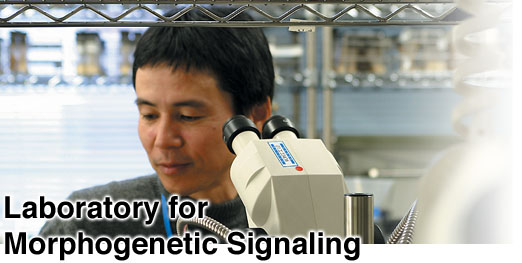





      |

A range of vital developmental processes, including the abilities to build complex structures through selective cell adhesion, to move through the body, and to form epithelial tissues,rely on interactions between cells, and between cells and the extracellular matrix. The means by which cells are able to communicate, congregate and work together to build a body are a central question in the study of morphogenesis, the focus of research in our laboratory.
The Drosophila tracheal system is a respiratory organ that delivers air directly to tissues through a network of finely branched epithelial tubes. Tracheal development begins by invagination of ectodermal epithelium that subsequently forms branches with specific types of cells migrating in stereotyped patterns. The branching patterns and cell fate are instructed by external cues including FGF, WG and Dpp. We are studying the roles of those signaling molecules in the specification and migration of tracheal branches, as well as the mechanisms that coordinate cell movement and cell adhesion. We additionally use 4D confocal imaging of GFP-labeled embryos to study the dynamism of cell and organelle movement in living organisms. Using combinations of GFP markers and transcriptional enhancers of cell-specific expression, we have been able to capture movements of tracheal cells at resolutions sufficient to image cytoskeletal organization and cell adhesion structures in single cells.
The development of appendages in Drosophila from primordial regions called imaginal discs is a second area of interest. During this process, subpopulations of cells in the imaginal discs segregate into distinct domains by coupling cell growth and differentiation to cell sorting, which provides us with an opportunity to study the regulation of cell affinity by positional information. Each limb primordium also coordinates its specific developmental pattern with other tissues, such as muscles, motor nerves and trachea, that are specified independently in other parts of the embryo. This understanding of mechanisms of limb specification and proximal-distal axis formation gained from work on Drosophila , however, must also be validated by comparative analyses in other species with simpler appendage structures. We focus on three species for these comparative studies: the bristletail, Pedetontus unimaculatus, the mayfly, Ephemera japonica and the ragworm, Perinereis nuntia.